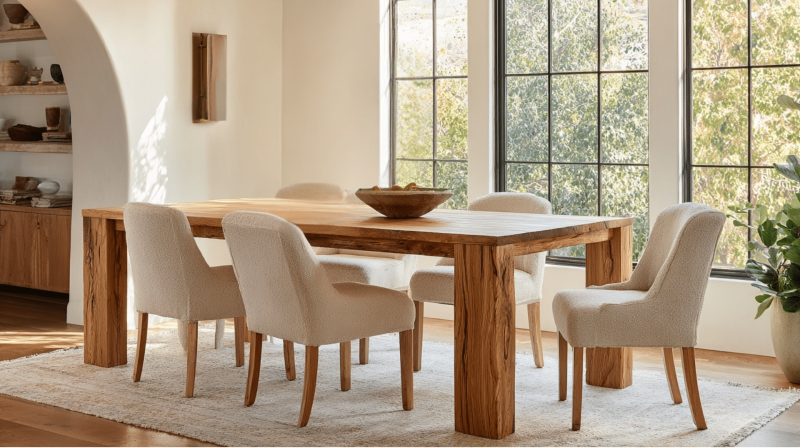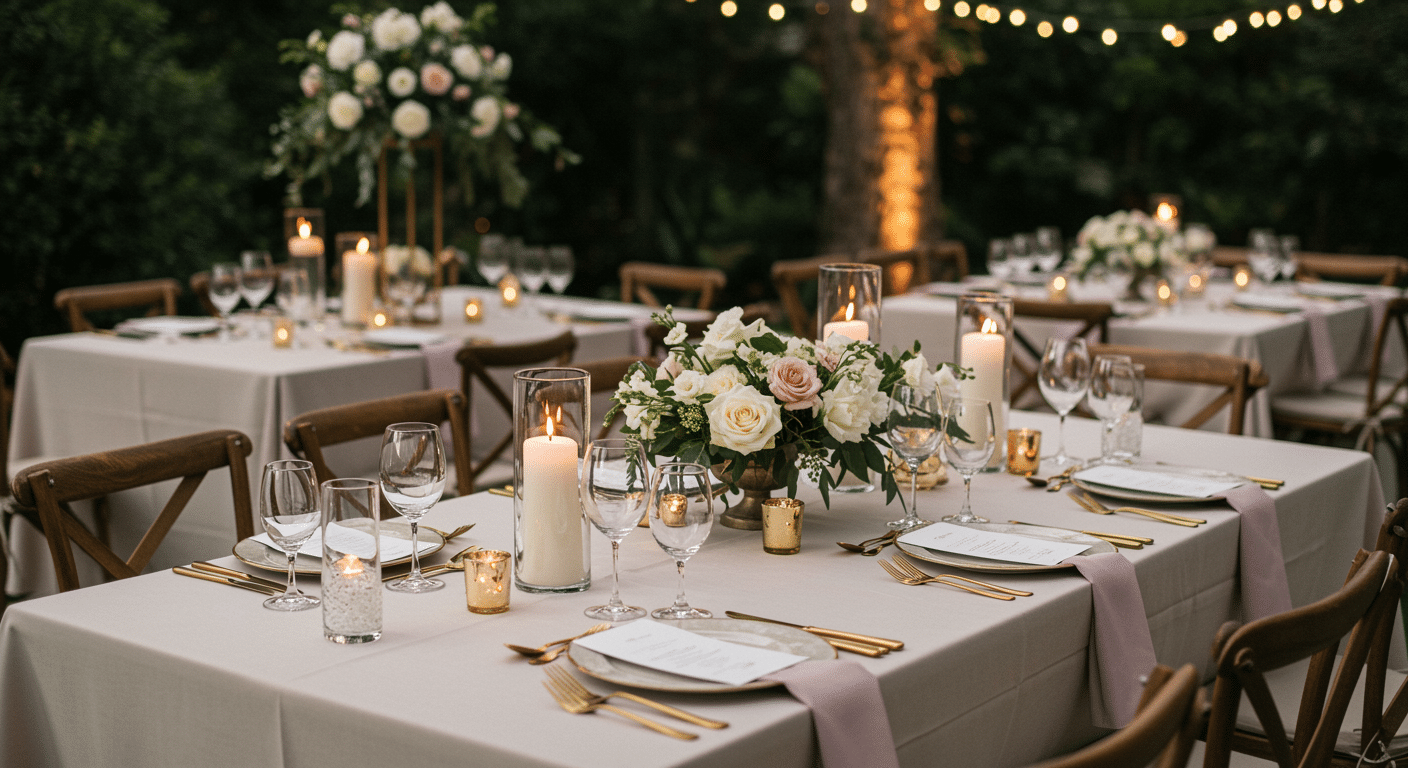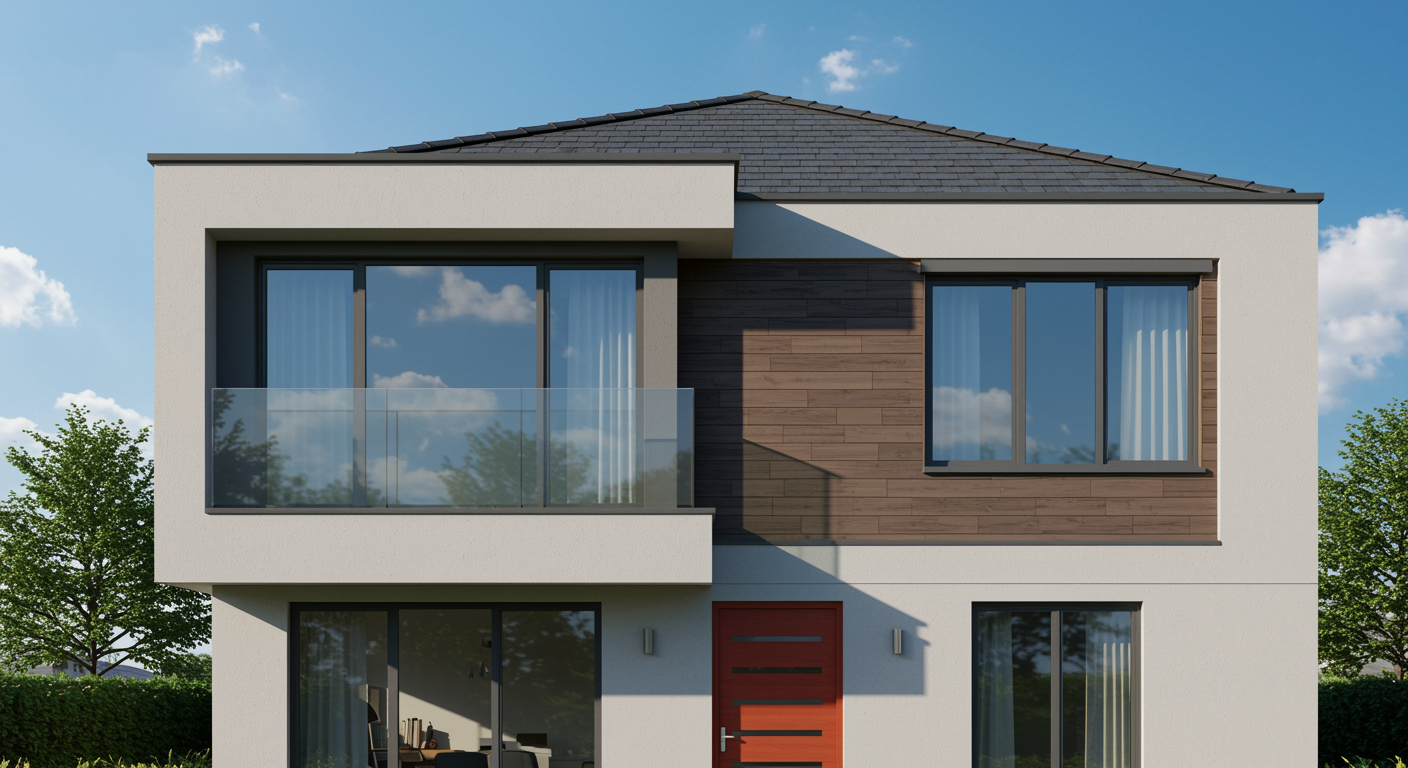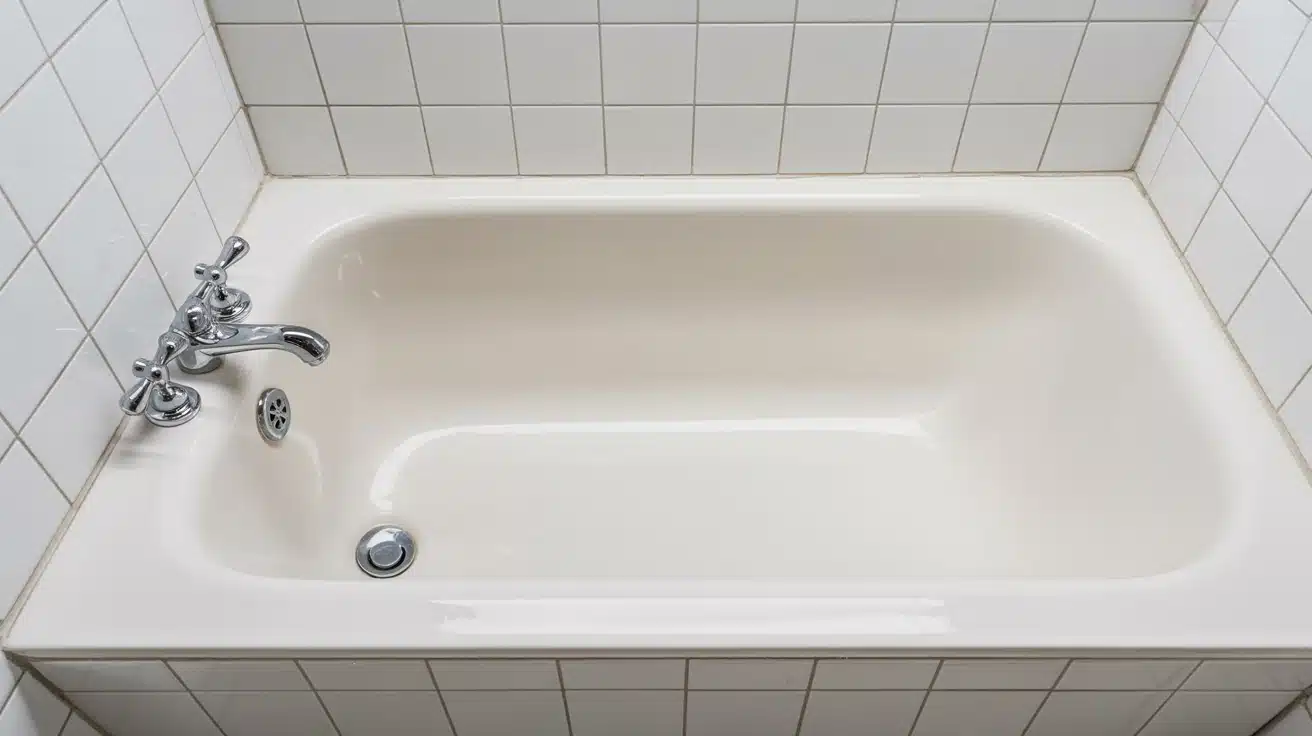Choosing the right wood for your dining table feels overwhelming. I get it – there are so many options out there, and you want something that looks great but also lasts for years.
Don’t worry, I’m going to help you find the best wood for dining table that fits your style, budget, and lifestyle needs. In this blog, I’ll walk you through the most popular wood options for dining tables. You’ll learn about durability, cost, and maintenance for each type.
Plus, I’ll share some practical tips to help you make the best choice for your home. By the end, you’ll know exactly which wood will give you that perfect dining table you’ve been dreaming about
Factors to Consider When Choosing Dining Table Material
Choosing the right dining table material is essential as it impacts the overall fit with your home.
When selecting a material, I focus on factors that balance practicality with aesthetic appeal to ensure the table suits my lifestyle and looks great for years.
The following are the factors you should look for when selecting the best wood for dining table.
1. Durability
I consider how long the material will last and how well it withstands everyday use. Durable materials like solid hardwood or granite tend to resist scratches, dents, and stains better than softer woods or delicate materials.
This factor ensures I invest in a table that endures family meals and gatherings without frequent repairs or replacements.
2. Maintenance
I look at how much effort is required to keep the table clean and in good condition.
Some materials need regular polishing or sealing, such as natural wood or marble, while others, like ceramic or melamine require minimal upkeep. Easy maintenance fits better with my routine and helps keep the table looking fresh and new.
3. Style and Aesthetics
The material must complement my home’s decor and personal taste. Wood adds warmth and can fit traditional or modern styles depending on the finish, while glass or metal offers sleek, contemporary looks.
Choosing a material that visually appeals to me makes the dining area inviting and harmonious.
4. Budget
I keep my budget in mind since materials vary widely in price. Solid hardwoods and stone tops like marble or granite tend to be more expensive but offer longevity and prestige.
Veneer, melamine, or engineered wood options can be more affordable but might sacrifice some durability or character.
5. Functionality
I consider how I use the dining table, whether it’s mostly for casual family meals, entertaining guests, or multi-purpose use like work or crafts.
Some materials are better suited for heavy usage or are child-friendly due to scratch and stain resistance, which influences my choice significantly.
6. Size and Space
The material’s weight and the table’s size have a practical impact on placement and usability.
Heavy materials like stone or solid wood require sturdy support and ample room, while lighter materials like glass or softwood tables are easier to move and fit smaller spaces.
7. Environmental Impact
I also think about sustainability and whether the material is responsibly sourced.
Opting for sustainably harvested wood or recycled materials aligns with my values and contributes to eco-friendly living, which is an increasingly important factor for me
Top Types of Wood for Dining Tables with Inspirations
Choosing the right wood for a dining table is about balancing durability, aesthetic appeal, and personal style. Every wood type has unique qualities that influence how it looks and lasts over time.
It’s honestly the same with countertop material as well. Every countertop type has its own charm and unique qualities. If you’re looking for the top options for your kitchen countertop, you can check out: Best Countertop Material.
The following are the best woods for a dining table I consider best.
1. Oak
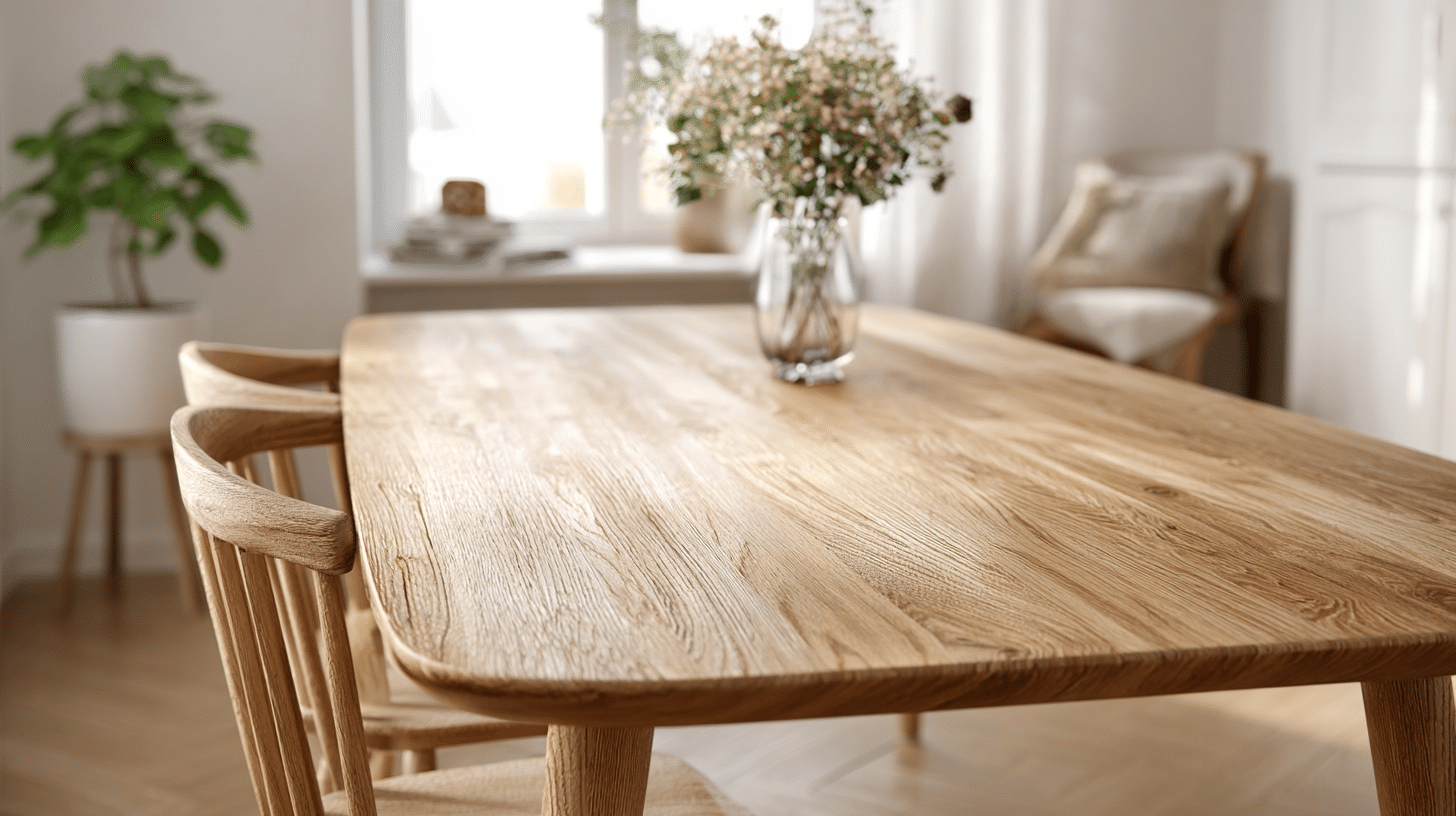
Oak is a classic choice with high durability and a strong grain pattern. It’s perfect if you want a table that can withstand heavy use, especially in family homes. I appreciate its prominent grain, which adds character and helps mask wear and tear.
However, oak can stain if liquids sit on it too long, so it needs timely cleaning. Its warm, natural shades range from light to medium brown, giving any dining room a cozy, traditional feel.
2. Maple

Maple has a smooth, tight grain that gives a clean, modern look. It’s very hard and resistant to scratches, which means it can handle busy dining rooms well. I like maple’s subtle beauty and strength.
On the downside, its lighter color can show stains more easily, and the wood can have some blotchy areas where stain absorbs unevenly. Its neutral tones make it easy to match with contemporary decor.
3. Cherry
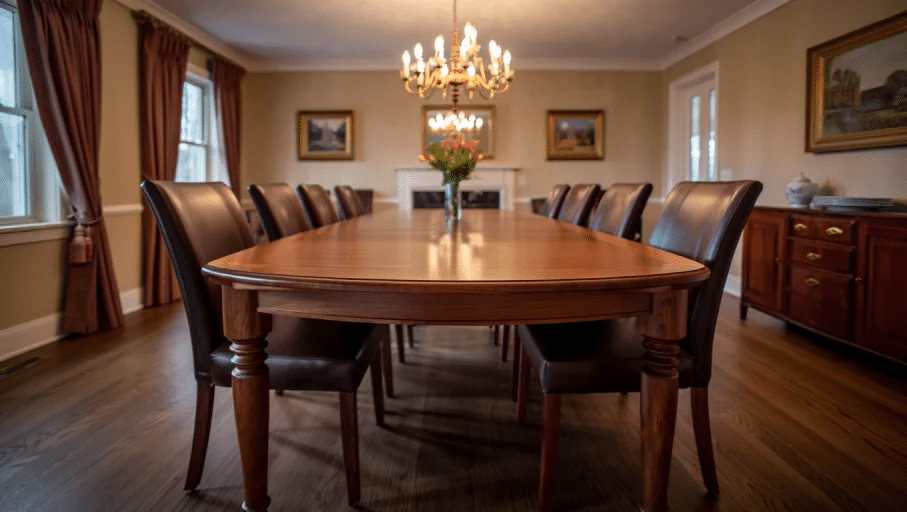
Cherry wood has a warm reddish-brown color that deepens and gains patina with age, creating a rich, beautiful look. I find its smooth grain very appealing for formal dining spaces.
Cherry is medium-hard, so it’s durable but a bit softer than oak or maple, meaning it can scratch more easily. Its aesthetic warmth and aging character make it ideal if you want your dining table to evolve beautifully over time.
4. Walnut
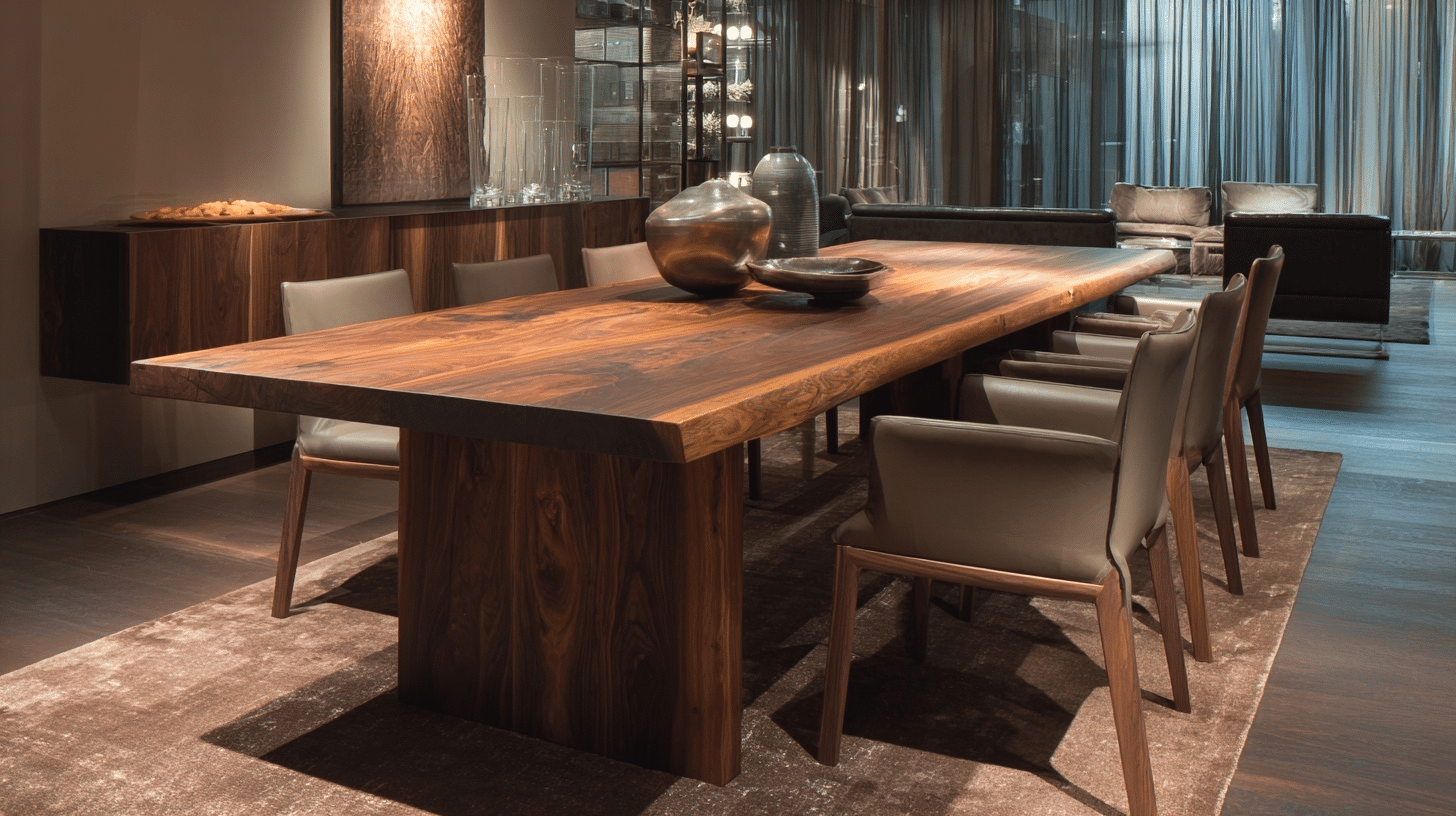
Walnut stands out with its dark, chocolate-brown hues and dramatic grain. From my experience, it adds a sophisticated and bold statement to any dining room.
It’s reasonably hard and durable but softer than oak, so it needs gentle care to avoid dents. Walnut’s rich color palette brings a luxurious, timeless appeal that suits design-forward spaces exceptionally well.
5. Hickory
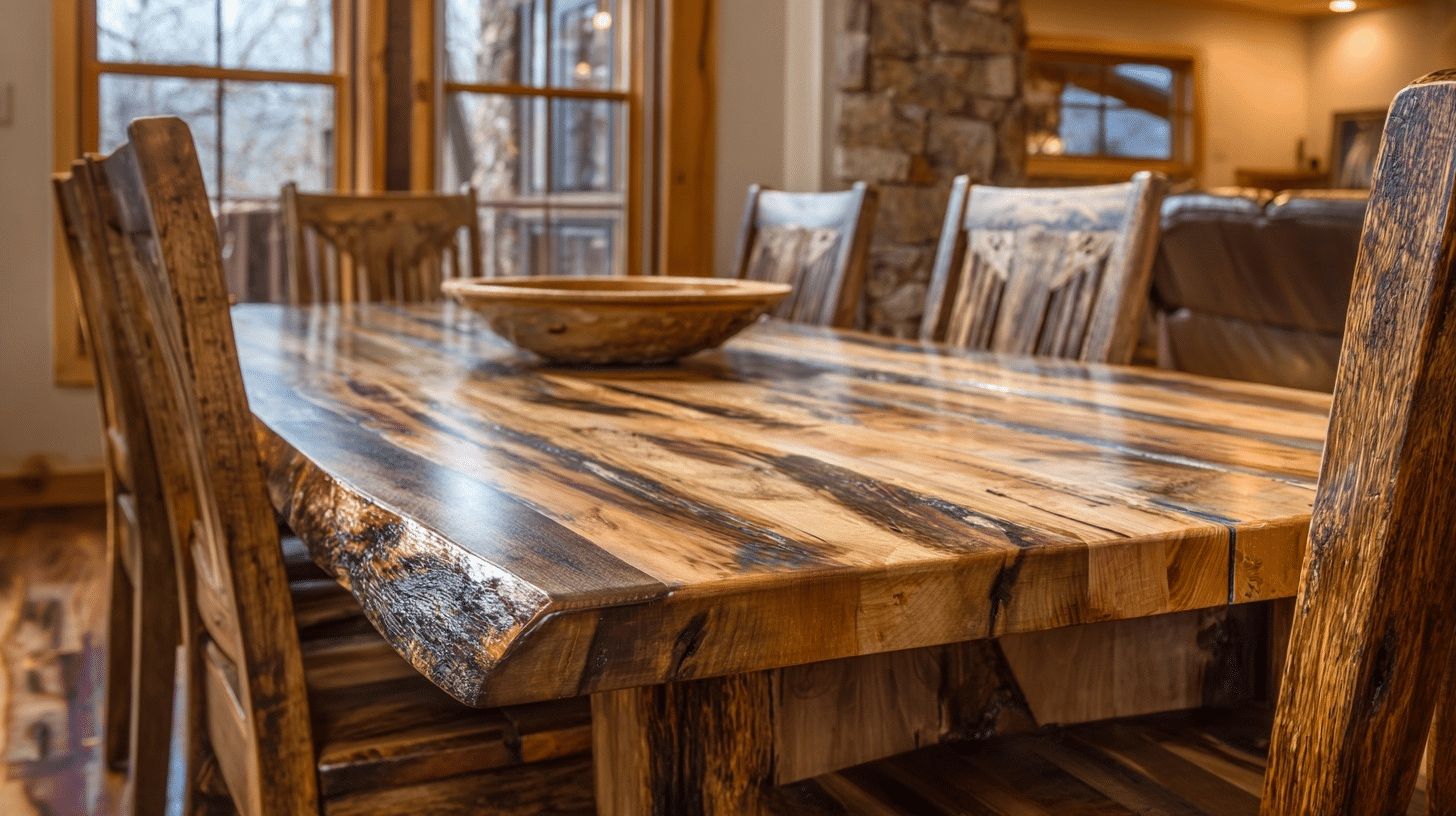
Hickory is incredibly tough, one of the hardest woods, and perfect for rustic, farmhouse-style tables that take a beating. I love its bold grain contrast, which gives off a natural, earthy vibe.
Its durability is unmatched, but the wood’s strong visual texture might be too busy for very minimalist settings. Hickory’s toughness means it can handle heavy use with minimal damage, ideal for active households.
6. Acacia
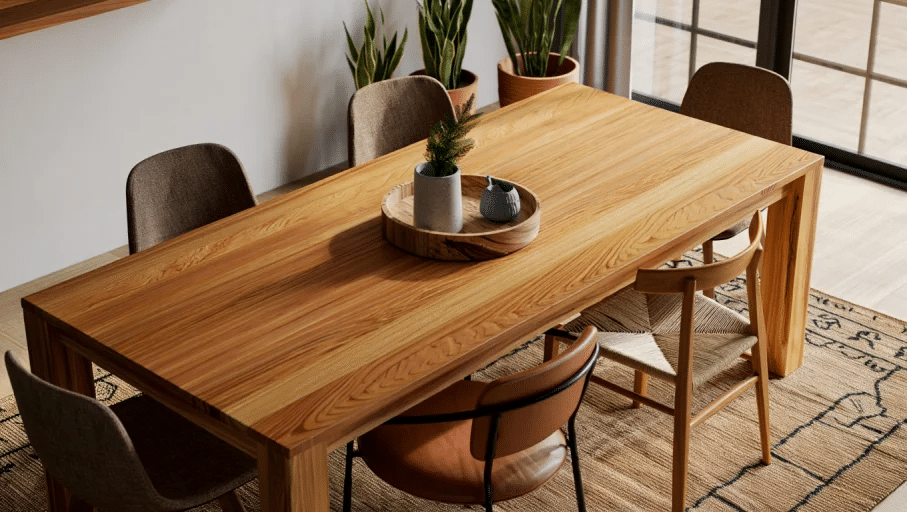
Acacia wood offers a stunning grain pattern that’s both striking and rustic. I find it highly durable and dense, which makes it great for long-lasting dining tables.
Its reddish-brown tones bring warmth to the room, complementing both traditional and modern aesthetics. The only con is that acacia furniture demands regular maintenance to preserve its finish, but it rewards you with beauty and strength.
7. Sheesham (Indian Rosewood)
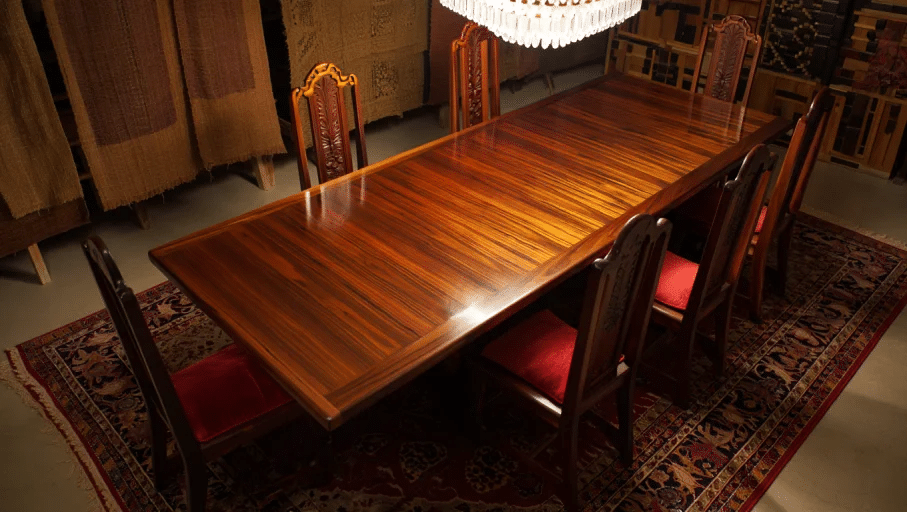
Sheesham is a richly hued wood with natural variations from dark brown to golden, giving each piece a unique character. I appreciate its toughness and resistance to decay, which ensures your dining table stands the test of time.
It’s eco-friendly and termite-resistant. The downside is that it requires careful cleaning, and excess moisture can damage it. Sheesham’s exotic grain patterns add a luxurious, handcrafted charm.
8. Pine
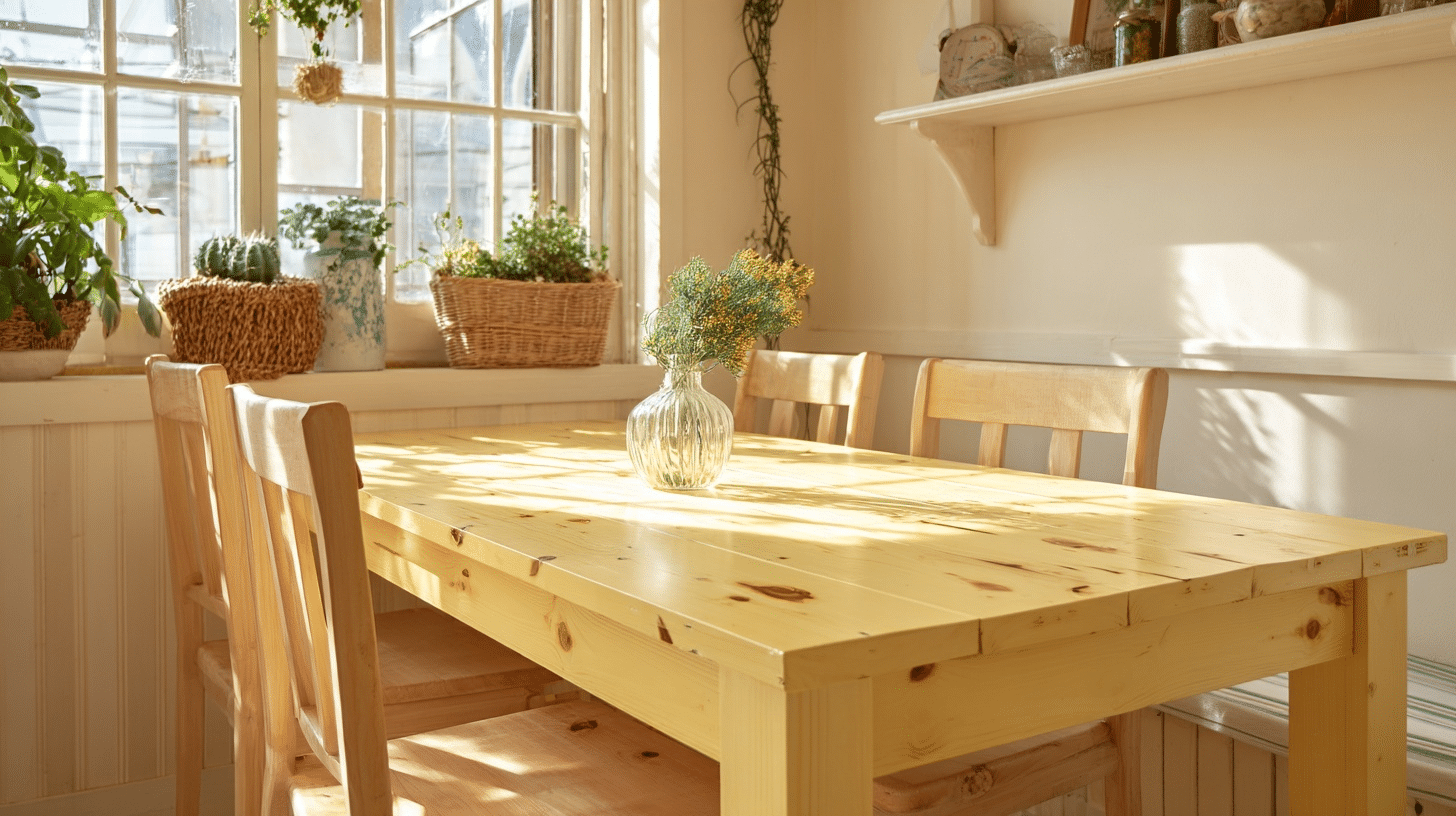
Pine is lightweight and affordable compared to hardwoods, making it popular for casual dining tables. I like that it’s easy to move and can be painted or stained to fit different looks.
However, pine is softer and more prone to dents and scratches, so it may not be the best choice for heavy daily use.
Its pale yellow tones and knots offer a rustic, country feel but require more care to keep looking good.
9. Mahogany
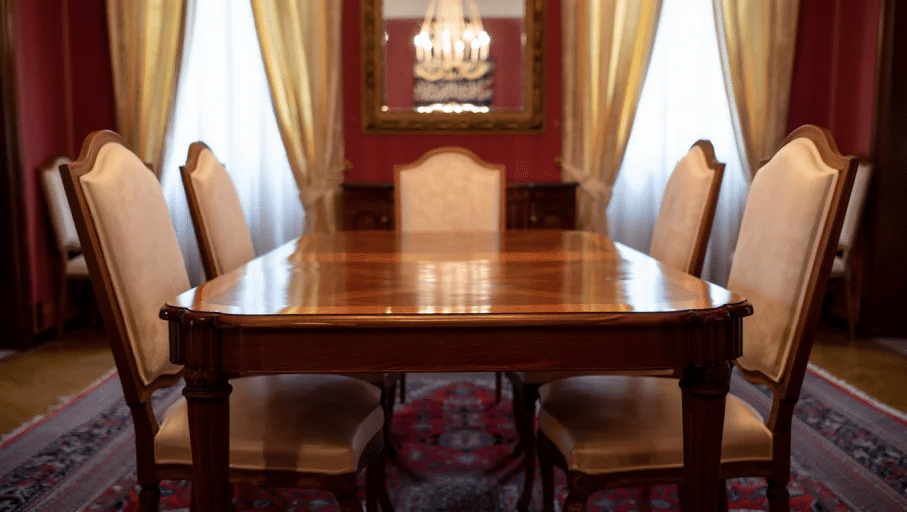
Mahogany wood boasts a deep reddish-brown color with fine, straight grain, creating a classic and luxurious dining table.
I value its high density and resistance to decay, making it both durable and visually rich. It’s slightly softer than oak but still robust.
How to Match the Best Wood to Your Dining Needs
When choosing the best wood for my dining table, I always start by considering my daily needs and lifestyle.
For a family with young children or if I host frequent gatherings, I lean toward hardwoods like oak, maple, or walnut, as they withstand heavy use and resist scratches.
If my decor is more beautiful or I don’t need a high-traffic table, cherry or mahogany offer a beautiful, polished finish and rich tones, but require a bit more care.
I also think about the table’s shape and size; lighter woods like pine or ash make it easier to move larger tables.
Ultimately, I weigh visual appeal, durability, care requirements, and how the wood’s character fits my dining habits and overall home style
Tips for Maintaining a Wood Dining Table
A wood dining table is a beautiful investment, so I make sure to give it regular care to keep it looking its best for years. With a few simple habits, I protect its finish and maintain its charm even with daily use.
Follow the below-mentioned tips to maintain your best wood for dining table.
- I use coasters and placemats to prevent water rings, heat marks, and spills from damaging the wood.
- Dust the table frequently with a soft, dry cloth to remove debris and prevent scratches.
- For cleaning, I use a damp cloth with mild soap, never harsh chemicals, to avoid stripping the finish.
- Wipe up spills immediately to stop moisture from seeping into the wood and causing stains or warping.
- I polish the table with a high-quality furniture wax or oil every few months to maintain its shine and protect the surface.
- Keep the table out of direct sunlight and away from heat sources to avoid fading and drying out the wood.
- Regularly check and tighten bolts or screws on the legs and supports to keep the table sturdy.
The Bottom Line
Finding the best wood for dining table doesn’t have to stress you out. You now know the key differences between hardwoods like oak and maple versus softer options like pine.
You understand how your lifestyle affects your choice; busy families might prefer durable cherry, while design lovers could go for unique walnut grain.
Take a moment to think about your specific needs. Consider your budget, how much maintenance you’re willing to do, and what style matches your home.


